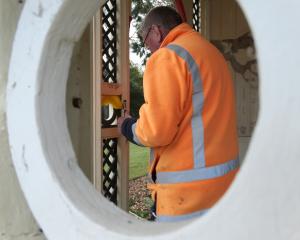Waitaki district residents are paying a substantial amount for a comprehensive infrastructure because of the area's low population, a new state-of-the-environment report looking at utilities says.
The district has 24 main water schemes - probably the highest number in New Zealand - with about 1600km of pipelines supplying more than 95% of its population, most of which require upgrading to new drinking water standards imposed by the Ministry of Health.
Only the Oamaru water supply, which may be extended to Weston, meets the new standards and the council faces having to spend about $10 million over the next six years upgrading the others.
The council also has nine public wastewater-sewerage schemes, serving up to 80% of the district's population.
The infrastructure report is one of several prepared regularly by the council and the latest looks at utilities - water and sewage schemes, stormwater, telecommunications and radio communications and hazard and environmental monitoring.
The report said the district's water schemes required substantial resourcing from the council, especially to comply with new drinking water standards.
The sewerage schemes managed by the Waitaki District Council had less of a need for significant investment, but the need may arise for existing schemes to be extended to cover communities using septic tanks.
The Herbert-Maheno-Reidston area would be the most likely to require reticulation in the future, with a relatively high density of individual septic tanks compared with other parts of the district.
The focus for stormwater reticulation was likely to be on ensuring systems could meet periods of intense rain, especially if these were to increase as a result of climate change.
In terms of telecommunications infrastructure, there could be upgrades, with more wireless data transmission in rural areas.
An extension of the fibre-optic network was possible, although most of those upgrades had already been completed.
More water-quality and climate utilities might need to be installed as a response to agricultural intensification in the district.




